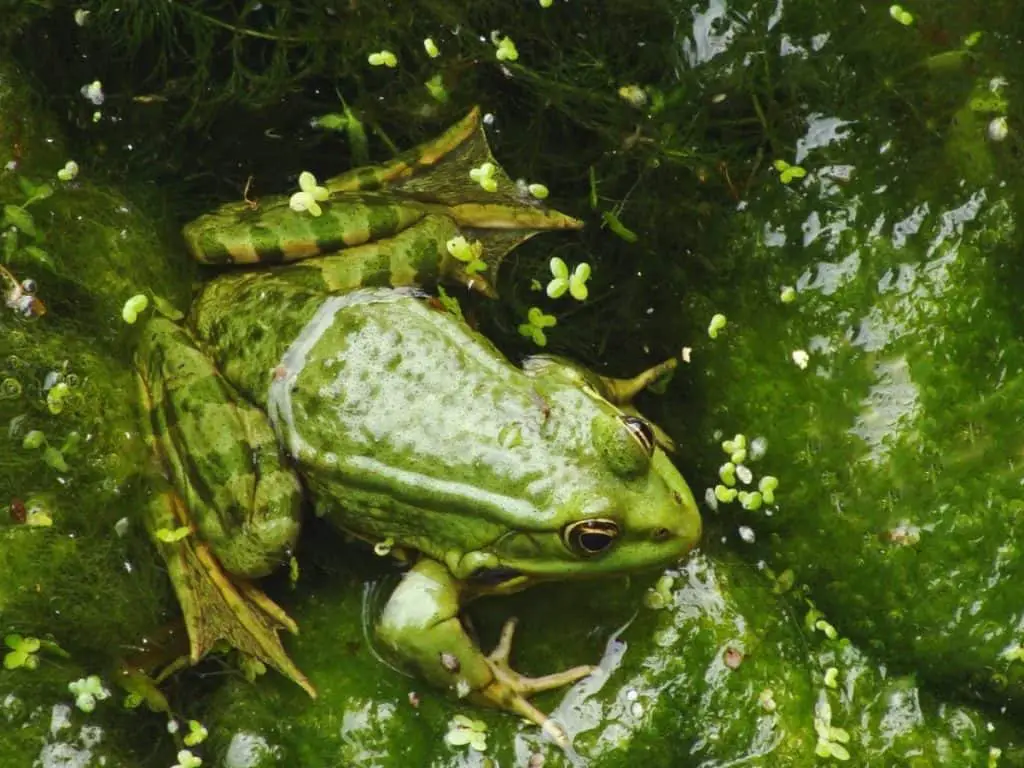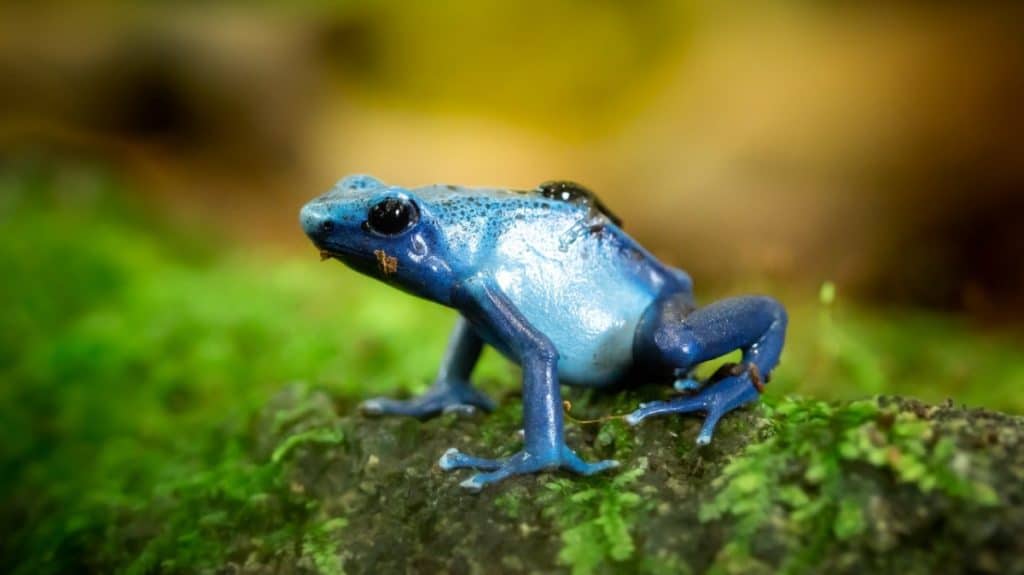
Ever came across an inactive frog and wondered whether it was dead or just in a hibernating phase? This article answers this question for you and other questions relating to hibernation and the death of frogs. Therefore continue reading.
Is a frog I am seeing dead or hibernating?
You might be tempted to think that a frog is dead while it is hibernating. Therefore, to be on the safe side, ensure that you do not cause any commotion to the frog by trying to confirm whether it is dead or not. In addition, ensure that you do not cause disturbance to its surroundings since that would be frightening the frog. External irritation could also lead to interference with the frog’s hibernation phase.
Scientific research suggests that particular species of frogs like to go through the hibernation cycle in oxygen-rich water. Throughout the winter or a significant part of it, the frogs will just be lying on the mud surface or partly bury themselves in the ground. This behavior is the frog’s way to survive the cold winter months.
What are the signs of a dead frog?
Some of the symptoms of a dying or an already dead frog include displaying skin discoloration, presence of bleeding wounds and ulcers. However, it is essential to note that a dead frog might not exhibit these symptoms, especially the external signs. Therefore, some common symptoms of dead frogs include hemorrhaging, which is intense bleeding from the frog’s body, broken limbs, emaciation, extreme fatigue, drowsiness, and injuries on the skin. A dead frog might exhibit one or more of these symptoms.
What are the reasons for a frog or froglet to die?
Some reports point out that most adult frogs die during the springtime of the temperate season. During this time, most frogs become exposed to predators, several adverse impacts due to reproduction, and death risks when migrating. Additionally, adult frogs appear to be at more risk of predation from snakes, otters, badgers, birds, foxes, and large fish, especially during the springtime.
This is mainly because adult frogs tend to form large gatherings during this time. Also, most female frogs die due to fatigue after going through the phase of depositing eggs in the water. When the weather conditions are extreme, the rate of female frogs dying increases significantly.
How do you know if a frog is dying?
According to some scientific studies, for some frogs, it is difficult to tell that they are dying through accessing external symptoms. This is because the frog might be dead but lacking outward signs and symptoms to show that it is dead. However, in several instances, dead frogs show evidence of hemorrhaging, which is severe bleeding from the frog’s skin, being excessively lean, broken limbs, extreme fatigue, prolonged sleep patterns, drowsiness, body wounds, and injuries. In several scenarios, dying frogs exhibit some of these symptoms, while in other cases, dying frogs may display all of these symptoms.
Do frogs turn white when they die?
When frogs turn white, it doesn’t entirely signify that they are dying or that they are dead. According to scientific reports, some species of frogs, like the African frogs, have naturally green skin tones. However, their skins turn white during scorching weather conditions. This is mainly an adaptation technique for keeping their bodies cool by reflecting the excess heat away.
Other frog species, such as the African clawed frog, display darkening of their skin when they experience disturbance or commotion. Additionally, in other frogs, their skins turn pale due to the stimulus of excitement or fear. However, there are scenarios where the turning of a frog’s skin color can be an indication of a disease or bad health.

Can frogs play dead?
To frogs, playing dead or pretending to be dead is a common practice that they’ll exhibit to survive the wrath of their predators. Therefore, it is an adaptation feature that prevents predators of frogs such as snakes, foxes, and birds from attacking them. The predators may even fail to become aware of their presence when frogs pretend to be dead.
Most frog predators do not like eating already dead prey as they can carry unwanted diseases. Instead, they prefer moving and healthy prey. Additionally, playing dead is a trick that makes the predators perceive that there might be other live prey nearby. This way, they end up deciding not to eat the frog and instead pursue frogs that are still alive.
If you can’t get enough of learning about frogs then I encourage you to check out the “Frogs Category Page” which consists of various articles that give answers to frog-related questions.
How long do frogs play dead?
Since playing dead helps frogs during impending danger from their prey, they know that it is a risky game that requires total perseverance. Therefore, frogs will only stop pretending to be dead when they are sure that they are out of the impending predator danger. So, if the predator goes ahead to pursue other live prey and is nowhere to be seen, frogs stop pretending to be dead immediately. However, in case frogs sense that the predator is still looming around, they will continue being inactive for as long as they can. Sometimes frogs play dead for as long as 48 hours.
Why do frogs die in ponds?
Whilst they’re located in ponds, frogs may experience several conditions that may lead to their death. First, during the excessive winter season, the conditions at the base of the pond get extremely cold. These shallow temperatures lead to the freezing of frogs can result in their death. Secondly, the accumulation of toxic elements and compounds at the pond base is detrimental to a frog’s health.
These harmful compounds begin by causing adverse health effects to frogs and ultimately result in them dying. The toxic compounds primarily come about when animals and plants decay in the water. Lastly, oxygen is very crucial for the respiratory system in frogs. Most frogs die in ponds when the water runs out of oxygen.
What should I do with dead frogs?
Like any other dead animal, the correct way of disposing of a dead frog’s body is by burying it in deep soil or reducing it to ashes through incineration. During either of the methods of disposing of a dead frog, it is essential to ensure that you avoid coming into direct contact with the remains of the dead frog. It is important to note that making contact with the remains of dead animals might lead to the transmission of infectious diseases.
What are the signs of a hibernating frog?
Frogs go into hibernation mainly during the winter season to survive the surrounding below freezing point temperatures. During this hibernating phase, frogs appear as if they are lifeless. A hibernating frog might even show no response to any attempt to pick up the frog. However, a close and precise examination of the frog determines whether the frog is hibernating or dead.
Increasing the body temperature of a hibernating frog leads to a positive response through body movements. A hibernating frog will display standard but faint activities on the throat since it is still alive. The activities on the throat are in an in and out state due to the slow rate of breathing.
Check out the video below if you want to see for yourself how the hibernating process works for frogs.
Why do frogs hibernate?
According to the physiological system of frogs, their body temperatures change depending on the temperature of the environment they live in. The onset of a winter season comes as a challenge to frogs since the low temperatures significantly reduce a frog’s metabolic state. Since the temperatures are extremely low, the frogs go through phases of slow breathing and slow heart rates.
Reports indicate that hibernation is an important survival mechanism that helps frogs preserve energy that is required throughout winter. Countries such as Britain experience a lot of frogs hibernating on land each winter.

Is a frog I’m seeing dead or hibernating when it’s not moving?
When you first glance at a hibernating frog, you might think that it is probably dead. However, the frog might be hibernating due to the low environmental temperatures. In this state, the frog is inactive and thus does not exhibit any physical movements. At this point, it is advisable to avoid causing any disturbance to the frog. Irritating the frog in this phase may severely harm both the frog and its hibernating process. Some species of frogs find it suitable to go through the entire hibernation phase in water.
Can frogs come back to life?
Hibernating frogs eventually come back to being physically active and full of life after completing the winter season, which marks the end of the hibernation period. The idea of coming back to life is a result of the gradual thawing of the frog’s frozen body. However, if a frog is dead, it is dead. A dead frog will never come back to life.
How do you revive a dead frog?
Frogs mainly die due to their body water levels dropping below the expected levels that can sustain metabolism. Dehydration of frogs may be a result of illness and prolonged hibernation. Therefore, reviving a frog that has lost a lot of body water requires you to hydrate back the animal by maintaining a considerable water level all over its body.
Ensure that the frog is not in too much water though since excess moisture can overwhelm the frog. You will achieve this by immersing the frog’s rear end in water, or better still, by using Pedialyte instead of water. Avoid submerging the head of the frog in the water or Pedialyte.
Check out the video below if you want to see a man revive a dying frog with CPR.
Conclusion
From physical observation, a frog might seem dead at first glance whilst it is hibernating. It will help the frog if a hibernating frog is left without disturbance so that it can complete its hibernation period peacefully. Some frogs prefer to go through the hibernation phase whilst they’re in oxygen-rich water.
